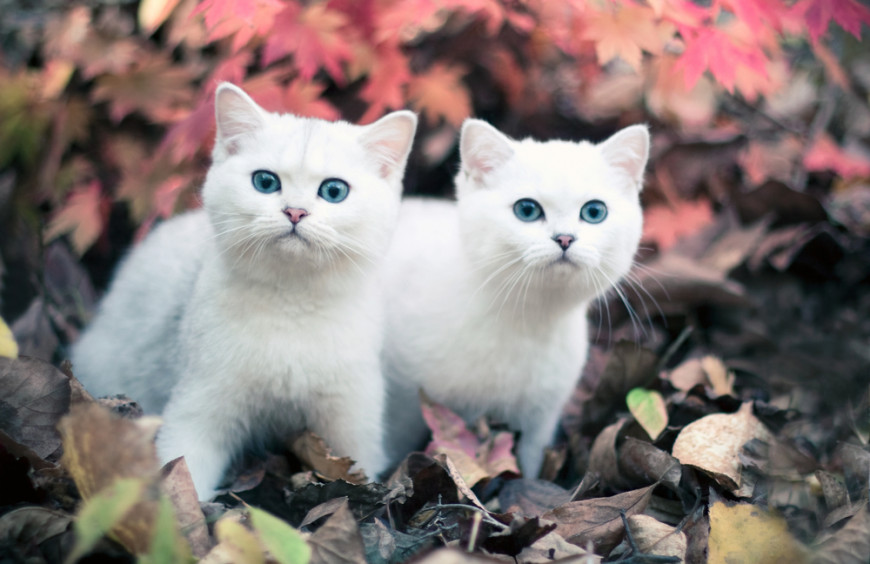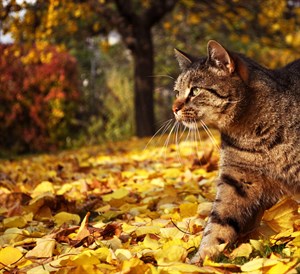Do you need help?
Five hazards cat owners need to be aware of

Five hazards cat owners need to be aware of this Autumn
Autumn brings a new set of challenges to cat owners, especially when the clocks go back, so here are some tips for keeping your cat safe as the nights draw in.
1. Road traffic accidents
Sadly we always see an increase in the number of trauma cases at this time of year as a result of road traffic accidents. As the days shorten and cats spend more time outside in hours of darkness, the number of road traffic accidents as a percentage of overall emergency cases goes up. The best way to keep your cat safe is to keep them indoors during the night but especially around the morning and evening rush hours.

2. Antifreeze
Unfortunately, antifreeze, or ethylene glycol, poisoning is commonly seen in cats. Ethylene glycol is the compound in most types of antifreeze and is also present in other products. It smells and tastes sweet so cats will drink it from puddles/spills on the ground or will lick it off their paws if they walk through some. The toxic dose is very small and even a few drops of ethylene glycol in a puddle will be enough to cause serious kidney damage and can be fatal. Signs will be seen within the first few hours after ingestion but are mild and easy to miss.
They include vomiting, drooling, incoordination (drunkenness – ethylene glycol is a type of alcohol). After the first 24-48hours, signs of poisoning are related to kidney failure and will include loss of appetite, vomiting, excessive urination or no urination at all. Seek urgent veterinary attention if you suspect your cat has ingested ethylene glycol – the longer the delay between ingestion of the anti-freeze and initiation of treatment the less favourable the prognosis.
3. Luminous necklaces and glow sticks
Luminous necklaces and glow sticks consist of plastic tubing with luminescent chemicals inside. These appear to be attractive to cats. The chemical mixture is very irritating to the mouth – commonly causing drooling, foaming from the mouth, vomiting and stomach pain. Whilst these signs look dramatic, ingestion is unlikely to cause significant problems, with effects mostly limited to gut and mouth. Contact your vet for further advice.
Suggested Tweet
Check out this handy blog post from @VetsNowUK to learn about the 5 most common dangers for #cats this #Autumn: https://goo.gl/eC73Cm
4. Fleas
We often see an increase in flea numbers at this time of year. Eggs in the carpets and soft furnishings start to hatch once the central heating is turned on. There are products available that can protect both your pets and your house.
5. Arthritis
Older cats may start to feel their joints more in the colder weather. You can help by making sure they have plenty of warm soft bedding and if you see any signs of soreness or stiffness mention it to your vet. There are a number of ways in which arthritis can be managed in dogs and cats and it can make a big difference to their general well being.
